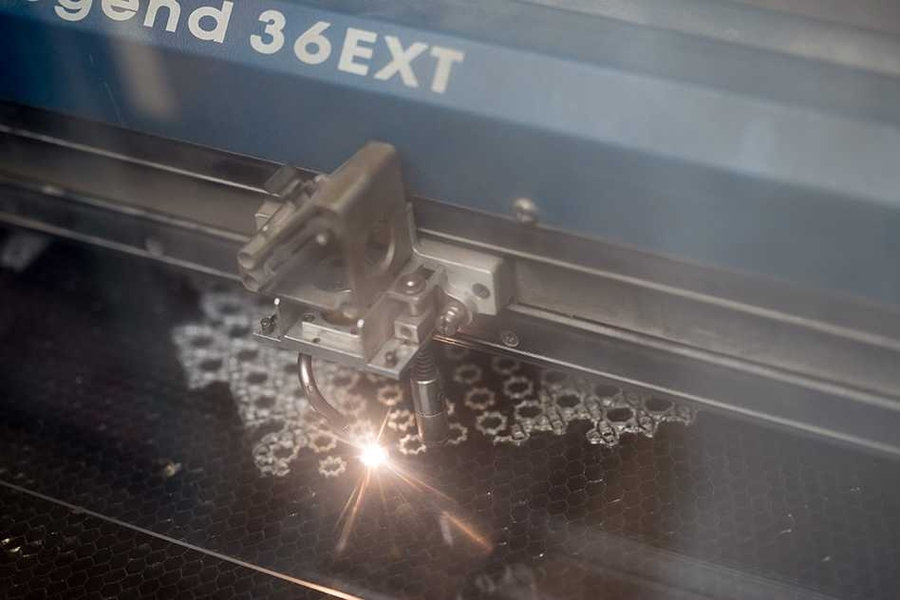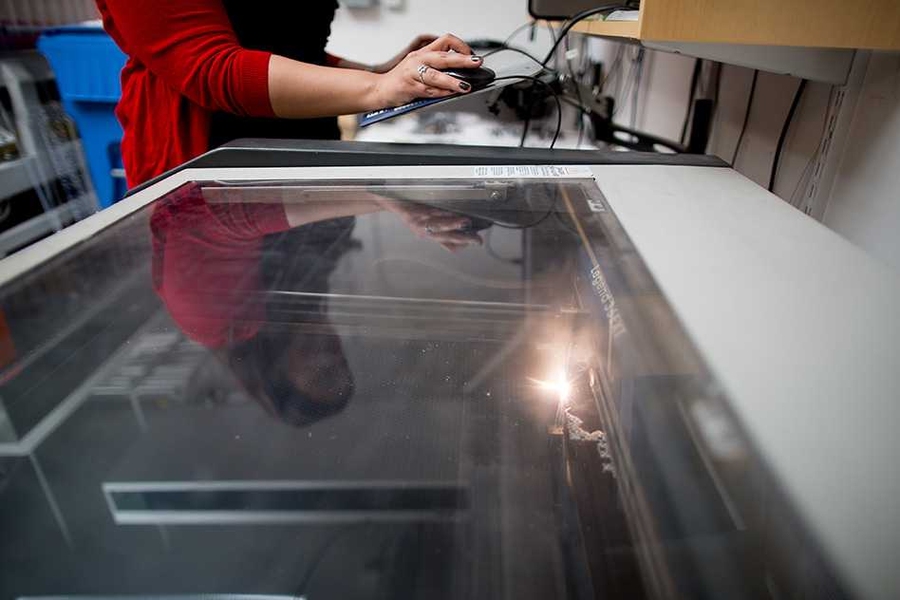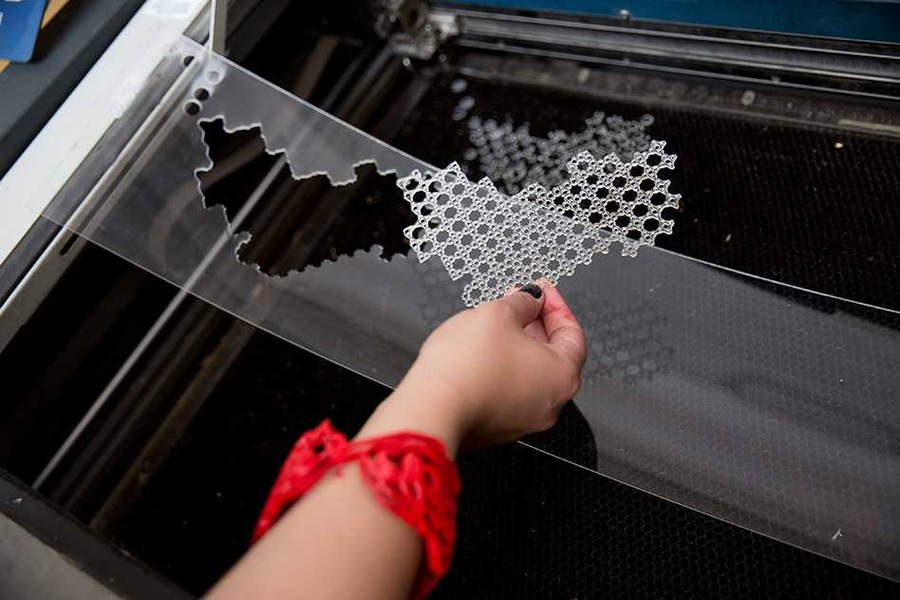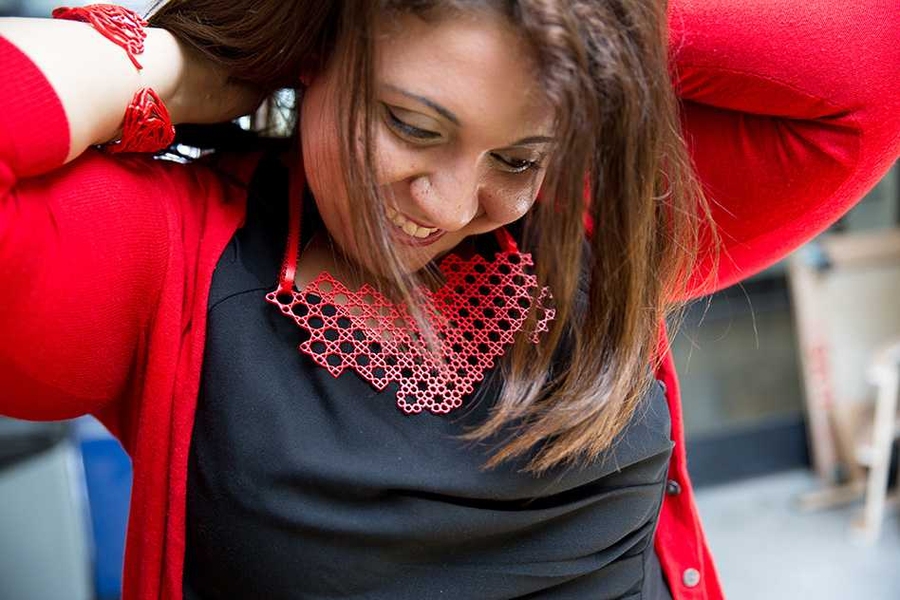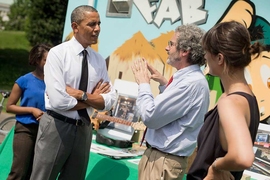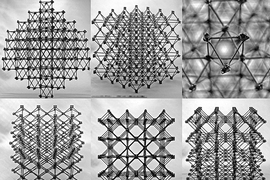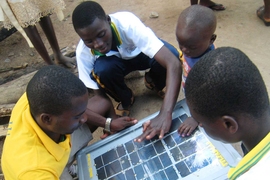It was another testy day in the post-revolution Cairo of 2012, with protestors and police crowding streets that threatened to erupt into violence.
Although she was nearly 5,500 miles away in Cambridge, Mass., MIT graduate student Dina El-Zanfaly was worried. She was thinking of the fab lab she helped found in Cairo — a community-based maker space where anyone can come in, learn to make anything using the lab’s machinery and tools, and work on any project they want. The lab wasn’t only a physical space for Egyptian makers; it was a grassroots movement — just like the Egyptian revolution — to create a community of makers in Egypt from scratch. So, like any concerned parent, El-Zanfaly called the lab’s director to make sure everything was all right.
“What are you talking about?” he asked. “This is one of the busiest days in the lab!”
Indeed, the fab lab in Cairo is a testament to the tenacity of makers working on their ideas, no matter the surroundings. “During the past several years the lab has served as a hub for young people who are just making things,” El-Zanfaly says. “Sometimes we’ve had to close for a couple days due to instability. But in general it’s very active, even during the unrest.”
The idea for Fab Lab Egypt was sparked in 2010, during the second year of El-Zanfaly’s Fulbright-funded master’s program in the Design and Computation Group at MIT, where she is now a PhD student. El-Zanfaly had just taken Neil Gershenfeld’s class on rapid prototyping, MAS.863 (How to Make (Almost) Anything).
“That class changed my whole life,” El-Zanfaly says. “Every week you learn a new skill and you use another machine.”
El-Zanfaly realized the value of her new skill set, but also wished she and other design-minded young people in her home country could have access to laser cutters, 3-D printers, and CNC (computer numeric control) mills. So after the class was finished, she approached Gershenfeld and asked him, “Why don’t we have this in Egypt?”
El-Zanfaly got to work, and by early 2012, with help and funding from several aspiring Egyptians, Fab Lab Egypt became the first fabrication lab in the Middle East. Since then, El-Zanfaly has helped create additional labs in two science, technology, engineering, and mathematics (STEM) high schools funded by the United States Agency for International Development (USAID): one all-girls school and one all-boys school. She’s also working to develop another lab in a third STEM school.
In the future she hopes to expand the network of labs into a project she calls San’a Tech — “san’a” means “craft” in Arabic — a more expansive effort, with a large innovation hub. “This is what Egypt lacks,” El-Zanfaly says. “Somewhere you get all the education and technical support to design and make anything; you get all the machines, all the tools, all the facilities. If you are working on a great idea or a product, you get everything under one roof.”
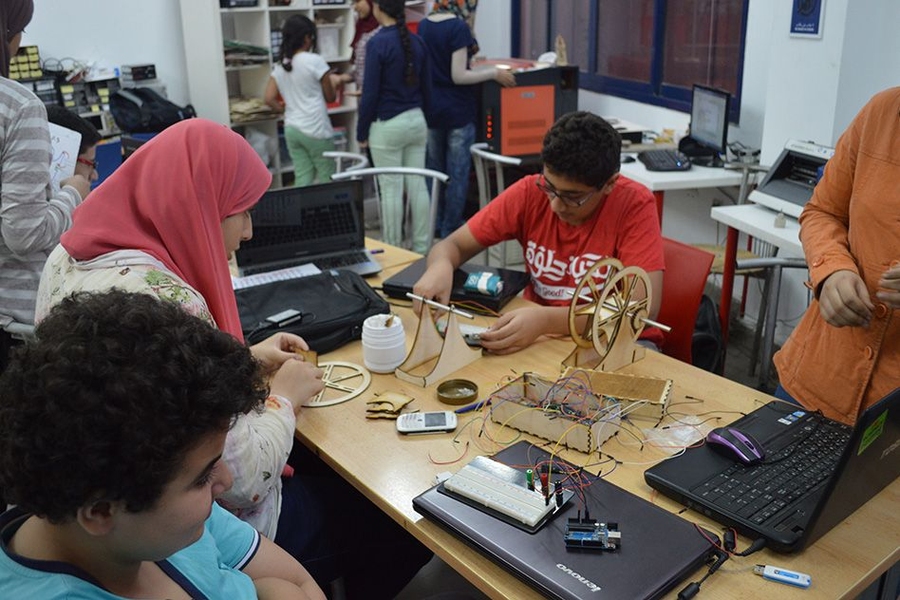
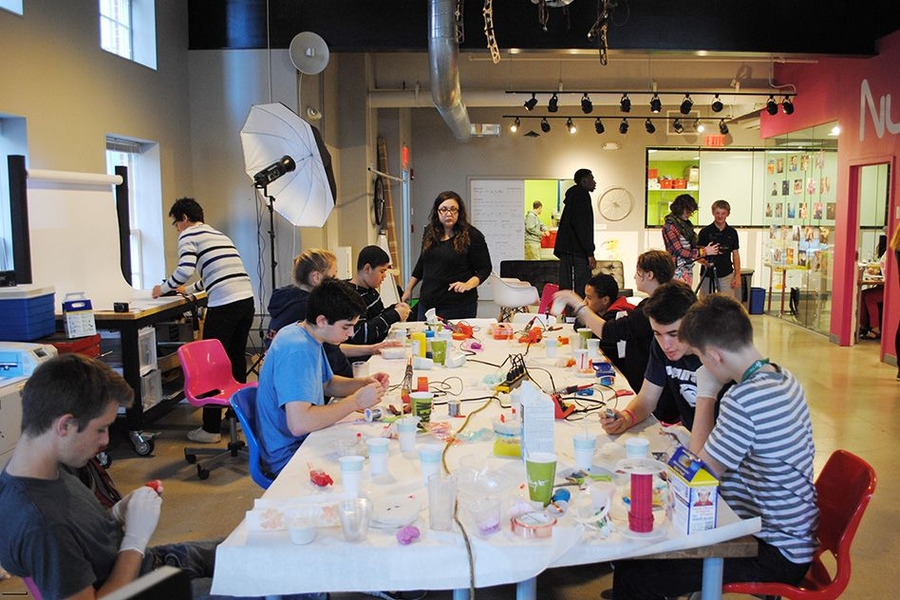
Learning to make, making to learn
While El-Zanfaly identifies as a natural maker, her research at the Design and Computation Group takes an academic look at the processes of designing and building. Computational design is a field that asks, essentially, how formal rules or algorithms can be used in the design process. “Usually people consider design or art [to be] ambiguous process,” El-Zanfaly says. “But we look at how we can describe it and enhance it using these computational tools.”
In particular, El-Zanfaly is interested in the feedback loop between making and hands-on learning. Hands-on learning is a well-established educational paradigm, of which making ought to be a prime example. But El-Zanfaly argues that this seemingly obvious connection is a fallacy for modern makers and learners. “The introduction of digital fabrication machines in educational institutions as creative means of hands-on learning is actually hands-off learning,” she wrote in a recent paper in which she articulated a new process of human-machine making.
The problem, she says, is that cutting-edge digital fabrication tools such as 3-D printers and laser cutters, while often viewed as hands-on, actually work more like “cookie cutters”: A user merely uploads a digital file and the machine does the rest. El-Zanfaly argues that, in order to use current technologies in learning, a new process of making and interaction is needed that allows a user to work more directly with the material itself — to provide the same iterative, improvisational experience one might have working with a piece of clay.
El-Zanfaly’s research insights are supplemented by her extensive experience teaching and working with makers of all levels: architecture students; the fab lab community of undergraduates and hobbyists; kindergartners who construct crafts with LEDs, batteries, and electrically conductive Play-Doh; and high-school students making games in motion and machines that make.
This year El-Zanfaly co-moderated a course — with fellow graduate student Theodora Vardouli and Terry Knight, a professor of design and computation, and El-Zanfaly's advisor — that introduced a new research area called “computational making.” “Making is construed broadly here — it’s not only about digital fabrication,” the co-moderators wrote of the course. “We are interested in how our active bodies and senses participate in the making of spaces and the things in them, and the potential roles of computation in making activities. Our focus is not on spaces and things in themselves, but on the processes and practices of their formation.”
Bringing MIT home
El-Zanfaly grew up in Egypt and received her bachelor’s and master’s degrees in architecture from Alexandria University in Egypt, where she taught and worked as a professional architect for more than three years. But when she arrived at MIT, she found a community of Egyptian students that wasn’t as cohesive as it could be.
She quickly became involved in the Egyptian Students Association, founding a board for the student organization in 2012 and holding several events, including one that raised around $10,000 for organizations helping people injured in Egypt’s 2011 revolution. She also set the vision of the association's board to establish the MIT-Egypt Seed Fund, an academic exchange program between Egypt and MIT. This program, which was launched by the succeeding board and will start this fall, was a factor in MIT’s decision to offer Arabic classes for the first time. “It would have helped me a lot if I had been able to collaborate with academic institutions like MIT before coming here,” she says.
“It was my dream to come here,” El-Zanfaly says. “If you want to make a change, there are a lot of things and people to help make it happen.”

